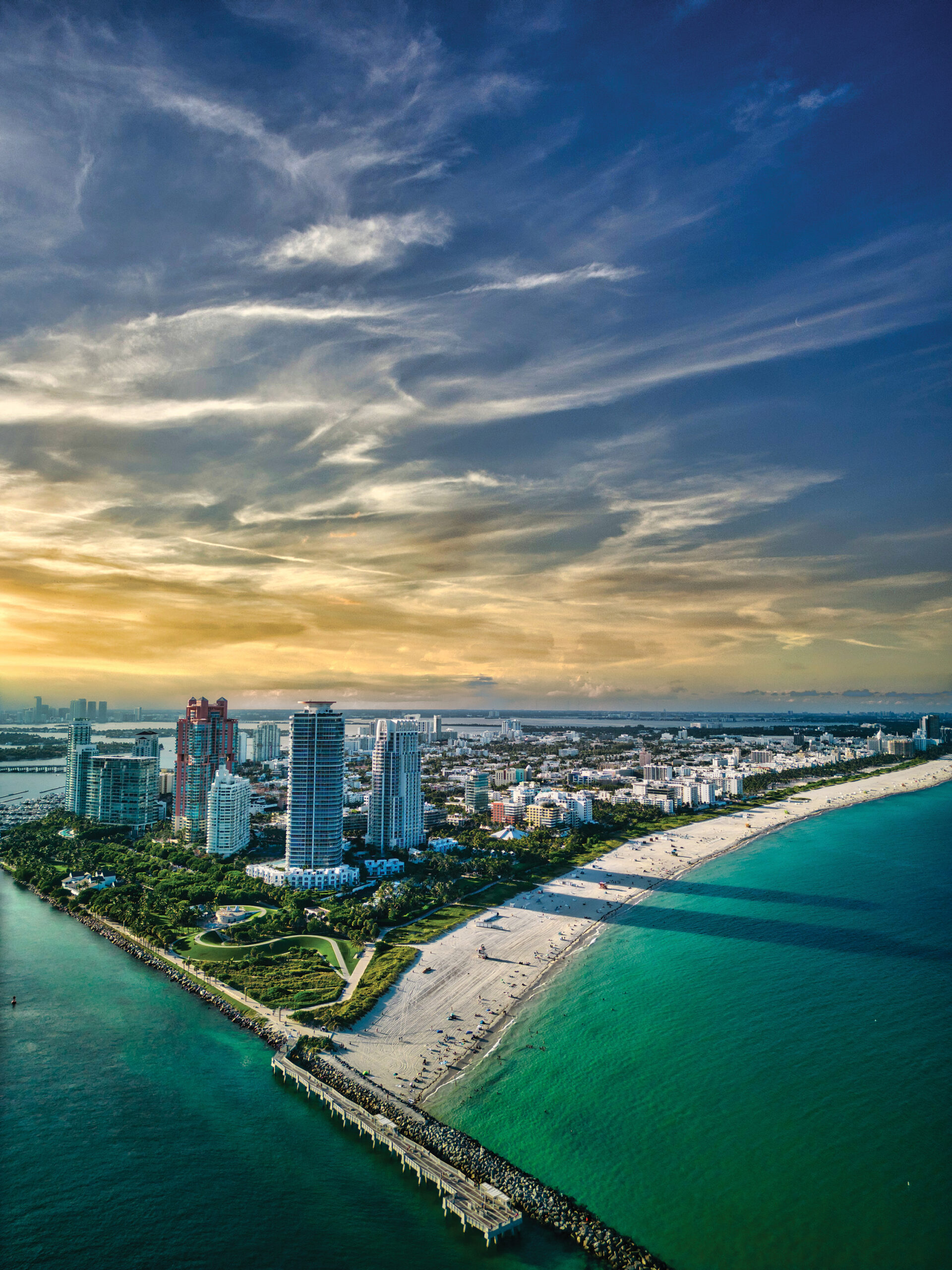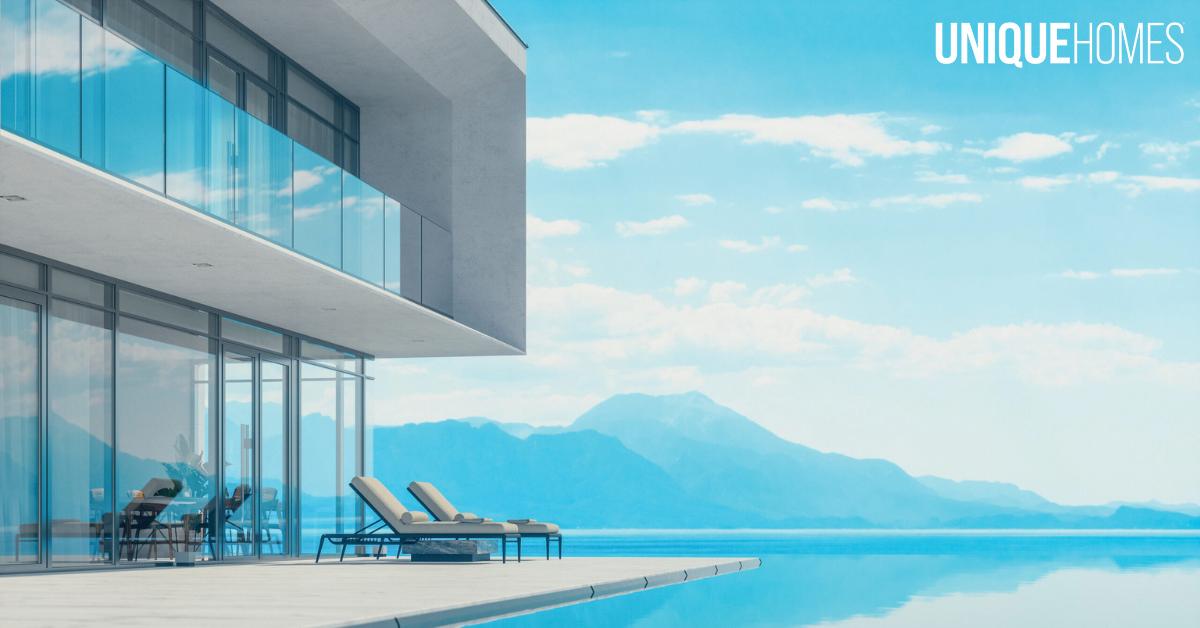Looking back, 2024 was a year of small improvements followed by equally incremental reversals. Looking ahead in luxury, it will remain the most vibrant part of real estate while the overall market gradually improves.
Not quite the long-awaited recovery that everyone has been longing for, 2024 was a year of ups and downs for real estate. “Some of the ‘wild cards’ are behind us,” says Michael Altneu, vice president of Coldwell Banker Global Luxury. “Rates have started to decline incrementally, some industry rule changes have been implemented, and we are no longer in the midst of a high-profile election cycle.” While the industry saw modest increases in inventory, that did not necessarily translate into transactions, making for a year of triumphs and challenges that continue to play out.
Homes Sales
Sales for 2024 will clock in at 4.02 million, approximately 2% below 2023 and well under the historical average of 5.28 million. “2024 has been a very difficult year on many fronts,” says Lawrence Yun, chief economist at the National Association of Realtors (NAR). “We did not get the home sales recovery this year after an awful 2023.”
Yet, by year-end, positive indicators emerged, potentially laying the groundwork for a turnaround in 2025. “While there is still some uncertainty surrounding the macro economy and housing at large, luxury real estate continues to be incredibly attractive for affluent buyers seeking advantages from both a lifestyle and investment standpoint,” adds Altneu. Existing home sales grew 3.4% in October, the first year-over-year gain since July 2021, followed by a 4.8% increase in November, the strongest year-over-year increase since June 2021.
Momentum is building when it comes to home sales, according to Yun. “More buyers have entered the market as the economy continues to add jobs, housing inventory grows compared to a year ago, and consumers get used to a new normal of mortgage rates between 6% and 7%.”
While growth encompasses the entire real estate market, Altneu says, “it is also indicative of transaction trends we’re seeing in the luxury space, which we hope to continue in the first half of 2025.” The number of single-family luxury homes sold in November 2024, according to the Institute for Luxury Home Marketing (ILHM), increased by 22.5%, while attached homes saw a 7.7% rise. The inventory of homes for sale is expected to increase by an additional 11% in 2025.
ILHM data shows that overall sales at $900,000 and above increased by 22.5% year over year in November. Compared to November 2023, new listings were up by 8.3% for single-family and 7% for attached properties, reflecting an increased confidence among sellers.
Expectations
Anticipation and hope that the second half of 2024 would bring lower rates was much delayed, indicating that the lower end of the market may continue to struggle in the coming months. “The lock-in effect that’s hampered inventory for three years just keeps rolling right into 2025, particularly at the lower tiers of the housing market,” Marci Rossell, chief economist for Leading RE and Luxury Portfolio, explains.
Have It All
Over 44% of Coldwell Banker Global Luxury agents report increased demand among the most affluent buyers for “have-it-all” properties — impeccably presented, move-in ready, or new-construction homes with attractive pricing. Another option for buyers who want it all is branded residences. Top choices that continue to dominate the resort landscape are residences that are tied to major hospitality, fashion, or automobile icons.
“Our expectation at the beginning of 2024 that affluent buyers would eventually adapt to higher interest rates and prices is becoming a reality,” says Altneu. There is still a large homeowner population with little incentive to sell, those with low rates, and those wishing to avoid paying capital gains taxes.
Just under half of luxury buyers this year paid with cash. Still, experts such as Ron Shuffield, president and CEO of Berkshire Hathaway HomeServices EWM Realty in Miami, say even for the affluent, rates play into buying plans since buying power can be reduced (or increased) significantly.

©ISTOCKPHOTO.COM/SZEPY
Consumers in the luxury market are increasingly turning to AI technology to find their dream homes, transforming the home-buying process. By streamlining searches and personalizing options, AI is ushering in a new era of innovation in real estate.
Rates and Growing Markets
“We are predicting steady growth in 2025 in markets throughout the world, with continuing high demand in the most prestigious luxury markets,” observes Meghan Barry, president of LuxuryRealEstate.com. In the U.S., interest rates are expected to remain relatively stable, with a possible slight decrease, while limited inventory will keep driving competitive prices. “Many real estate consumers will have adjusted their expectations by 2025, and the ‘why now’ conversations with buyers and sellers will be less of a challenge for those in the industry,” says Barry.
Expectations are that mortgage rates will hover in the 6% range in 2025, which Yun believes will be the new normal. Yun also forecasts a 9% increase in home sales for 2025 and 13% in 2026.
Curves Ahead
Significant changes are on the horizon, not because of commission rulings but as a result of artificial intelligence (AI). Few areas of real estate and homes will be immune to the influence of AI. “It will be like going from kindergarten to fifth grade,” says Kevin Hawkins, editor of Real AI. From security to renovation to interiors and design, AI will enhance and also streamline. By unlocking data from photos, AI will empower home searches, allowing buyers to continually fine-tune their vision and then find homes to match that vision. And rather than taking over an agent’s function, Hawkins says AI will elevate what they bring to the buying process.
“It’s encouraging to see contract signings increasing in all major regions of the country,” Yun says. “More notable gains from a year ago occurred in the expensive regions of the Northeast and West. The recordhigh stock market is providing a boost for upper-end home buyers.” Miami-Fort Lauderdale is projected to be a 2025 hot market only eclipsed nationally by Colorado Springs. “I am very encouraged by 2025,” says Shuffield, noting slow sales over the last three years, with 2024 charting the fewest residential transactions in Miami-Dade in the last 15 years. “That’s getting ready to change,” he says. “We are anticipating that 2025 will be a much stronger year in number of sales. But we don’t forsee a spike in prices. Prices will probably be steady and stable.”

ISTOCKPHOTO.COM/GEORGECOTAYO
Demographic Plays
“The profile of the luxury home buyer has evolved in recent years, with several new generational groups emerging as key drivers,” says Anton. “Millennial and younger Generation X consumers are becoming more prominent within the market, particularly as they inherit wealth and capitalize on successful investments across artificial intelligence and cryptocurrency ventures.”
Post Election
Political activity typically translates to movement in the real estate market, particularly the high-end, and this year has been no exception. Stephanie Anton, president of Corcoran Affiliates, says, “Just this past month following the presidential election, we’ve observed a significant increase in luxury buyer activity within Corcoran markets where inventory is stable.”
Currently, financial markets are anticipating economic growth under the Trump administration, which Realtor.com economists believe will boost incomes. The surprise factor will be how other policies affect the price of goods and services and whether anticipated tax cuts occur.
Other potential policy changes under the new administration could have mixed results, according to Realtor.com economists. Initiatives to make Federal land available for home building and potential streamlining of regulations could boost the supply of homes. At the same time, tariffs and new policies could constrain home construction and renovation efforts.
The luxury market has been real estate’s bright spot, according to Rossell, who sees the market as bifurcated with wealthy individuals benefiting from stock market gains and corporate tax cuts. “I think luxury does really well in this environment because for the high-net-worth buyer, their stocks are exploding, and the wealth effect is powerful.”
On the Horizon for Design
Few rituals provide a better snapshot of the consumer mindset than color forecasts. Following Pantone’s precedent, manufacturers of all stripes, from paint to exterior cladding to wallpaper, now offer similar insights on color and designs. Tapping into a growing desire for comfort and subtle elegance, Pantone looks to Mocha Mousse as the Color of the Year. This rich, warming mid-tone evokes the comfort derived from coffee and chocolate and expresses a global mood and attitude. In luxury, browns are taking center stage, a penchant designers see extending into furnishings, particularly a preference for wood. Optimal design today combines vintage pieces with comfortable textures and modern accents. Wood sideboards and credenzas are expected to make a comeback. “The same is happening in architecture, where even the more austere practitioners have embraced organic materials and ‘warm minimalism.’”
Expected Additions
2025’s hot button? Cold plunge pools and cold treatments for wellness. Adoption of these features surged in 2024, and it seems cold therapies have become integral to wellness. Also cropping up on wishlists are wet rooms favored by architects, designers, and consumers. Built around a curbless shower and a tub, these glass enclosures conserve square footage while also creating an indulgent master bath. Where money is no object, 1st Dibbs says closets with extra space and storage are the top additional rooms that designers will recommend to clients. Recommendations for guest suites follow close behind. Also on the rise is an interest in scullery and outdoor kitchens, which are part of the continued appeal of athome entertaining. Kitchens are predicted to be the most requested renovation per 1st Dibbs annual designer survey, with 61% of homeowners seeking updates. Living rooms follow at 51%.


